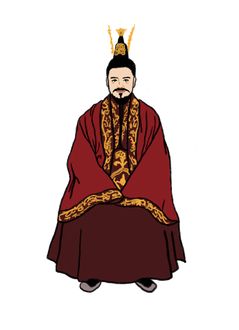"Consolidator of Baekje, King Geunchogo"의 두 판 사이의 차이
| 14번째 줄: | 14번째 줄: | ||
<gallery mode=packed heights=220px> | <gallery mode=packed heights=220px> | ||
| + | 파일:근초고왕_일러스트.jpg|Illustration of King Geunchogo | ||
</gallery> | </gallery> | ||
| 20번째 줄: | 21번째 줄: | ||
=='''Related Articles'''== | =='''Related Articles'''== | ||
| − | |||
=='''References'''== | =='''References'''== | ||
2017년 11월 25일 (토) 12:40 판
King Geunchogo (?–375, r. 346–375) was the 13th king of Baekje, one of the kingdoms of the Three Kingdoms period. Baekje reached its zenith under his rule.
The kingdom of Baekje began as a city-state that emerged out of the Mahan Confederacy, which occupied the southwest region of the Korean peninsula during the proto-Three Kingdoms period. By the time Geunchogo came to power, Baekje had amassed great regional strength, but other Mahan tribes still held power in the areas south of Baekje. In the beginning of his reign, Geunchogo established a regional governance system and dispatched designated authorities to each local area in order to efficiently control local areas. By doing this, governance in regional areas stabilized, which allowed him to centralize power around himself, the king.
With stable regional governance and the centralization of power, Geunchogo was able to conquer the remaining Mahan people to the south of Baekje in 369. Baekje also gained influence over the Gaya confederacies. Thus, Geunchogo consolidated the southwest corner of the Korean peninsula. Two years later, in 371, Geunchogo attacked Goguryeo in the north, killing Goguryeo’s King Gogugwon at Pyeongyangseong Fortress. This secured Baekje’s control over the Han River basin, and Baekje’s territory now stretched along much of the Yellow Sea coast.
Geunchogo also sent forces to Liaoxi and Shandong in China, as well as Kyūshū in Japan. Under Geunchogo’s reign, Baekje became a key international commercial trade center which facilitated maritime trade between China and Japan. During this time, Baekje introduced various cultural items and practices, such as Baekje culture, Confucian texts, and Chinese characters to Japan.
Geunchogo died in 375 after a reign of 29 years.
